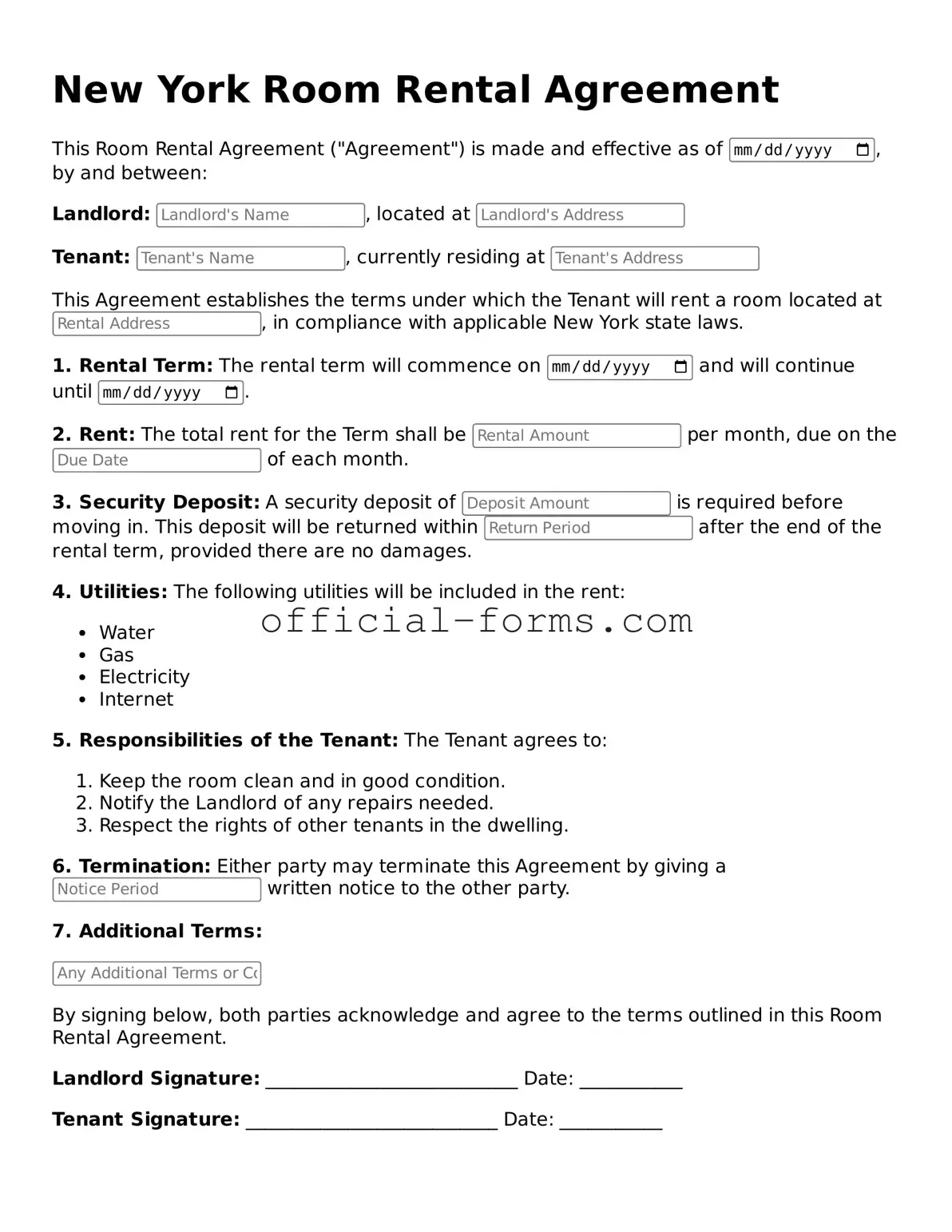Filling out the New York Room Rental Agreement form can seem straightforward, yet many individuals inadvertently make mistakes that can lead to complications down the line. One common error occurs when tenants fail to provide accurate personal information. This includes not only names but also contact details. Inaccuracies here can hinder communication between the landlord and tenant, creating unnecessary confusion.
Another frequent oversight is neglecting to specify the rental period clearly. Without a defined start and end date, both parties may have differing expectations regarding the duration of the tenancy. This ambiguity can lead to disputes, especially when it comes time to renew or terminate the lease.
Some individuals overlook the importance of detailing the rent amount and payment schedule. It's crucial to state how much rent is due, when it is due, and the acceptable methods of payment. Missing this information can result in misunderstandings and financial strain, as tenants may not know when to expect their obligations.
Additionally, people often forget to include the security deposit amount. This detail is essential, as it protects both the landlord and tenant. Without it, tenants may be unaware of their financial responsibilities, and landlords may find themselves unprotected against potential damages.
Another mistake that can have significant consequences is failing to outline the responsibilities for utilities and maintenance. It's important to clarify who will pay for services like water, electricity, and internet, as well as who is responsible for repairs. Leaving this vague can lead to disputes over unexpected bills or maintenance issues.
Many tenants also neglect to read the fine print regarding rules and regulations. Understanding what is expected in terms of behavior, noise levels, and property use is essential. Ignoring these stipulations can lead to conflicts and even eviction if the terms are violated.
Moreover, some individuals do not take the time to review the agreement thoroughly before signing. Rushing through the process can lead to overlooking critical clauses that might affect one’s rights or obligations. A careful review can save a lot of headaches later on.
Another common error is not keeping a copy of the signed agreement. Once the document is signed, both parties should retain a copy for their records. This practice ensures that everyone has access to the agreed-upon terms should any issues arise.
Finally, people often forget to ask questions if something is unclear. If any aspect of the agreement is confusing or seems unfair, it’s vital to seek clarification. Engaging in open communication can prevent misunderstandings and foster a better landlord-tenant relationship.
